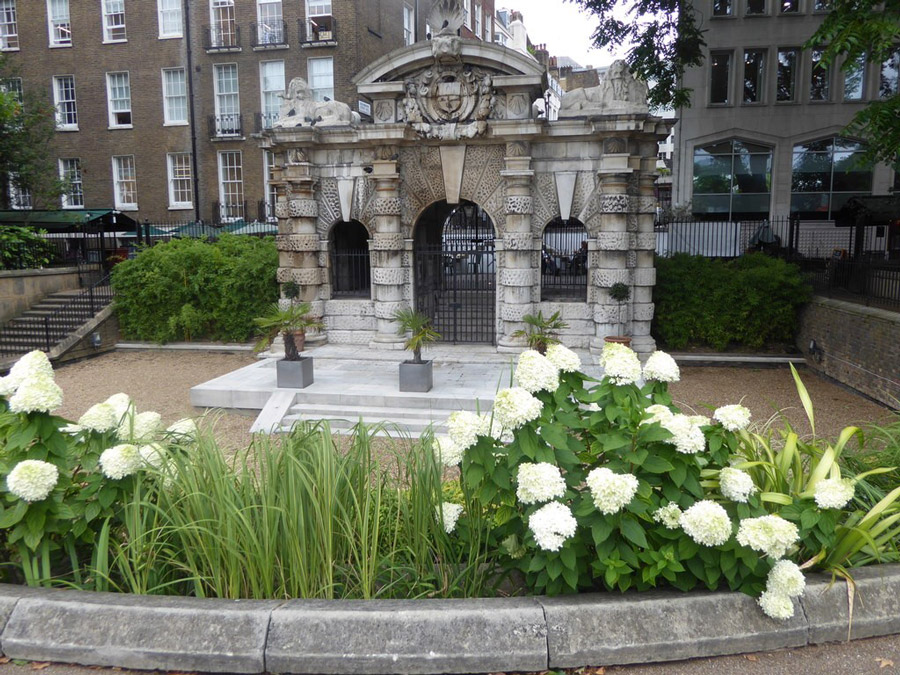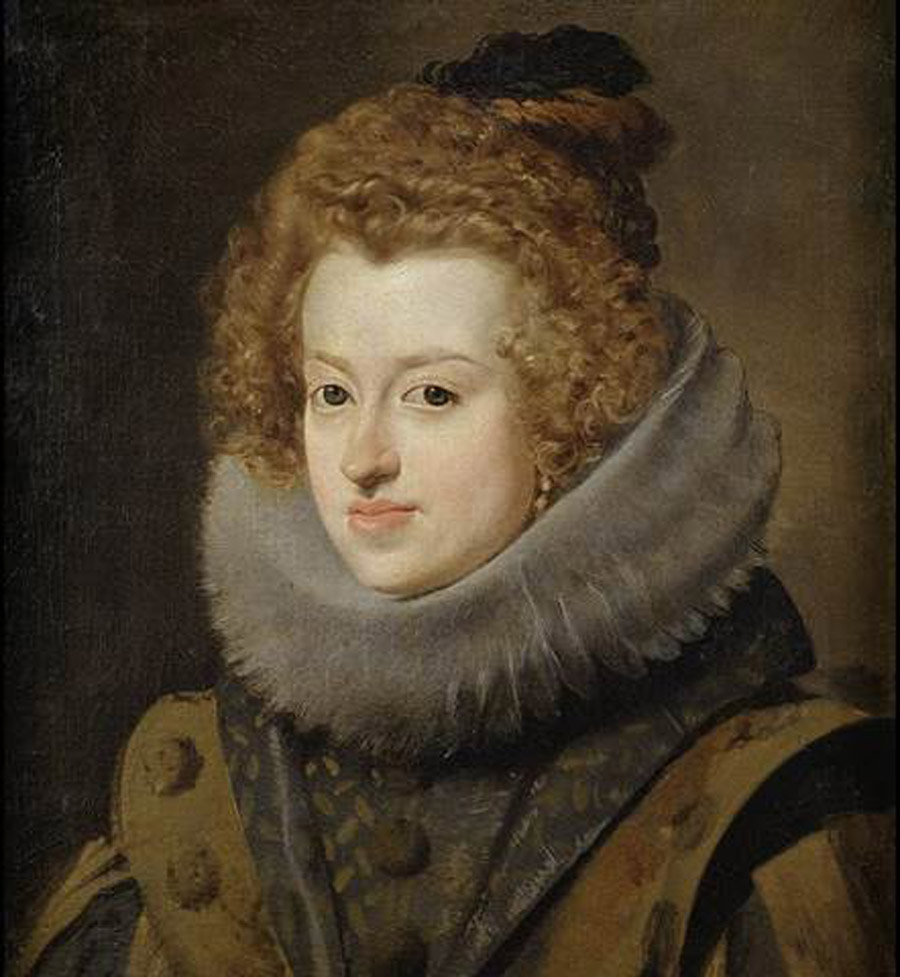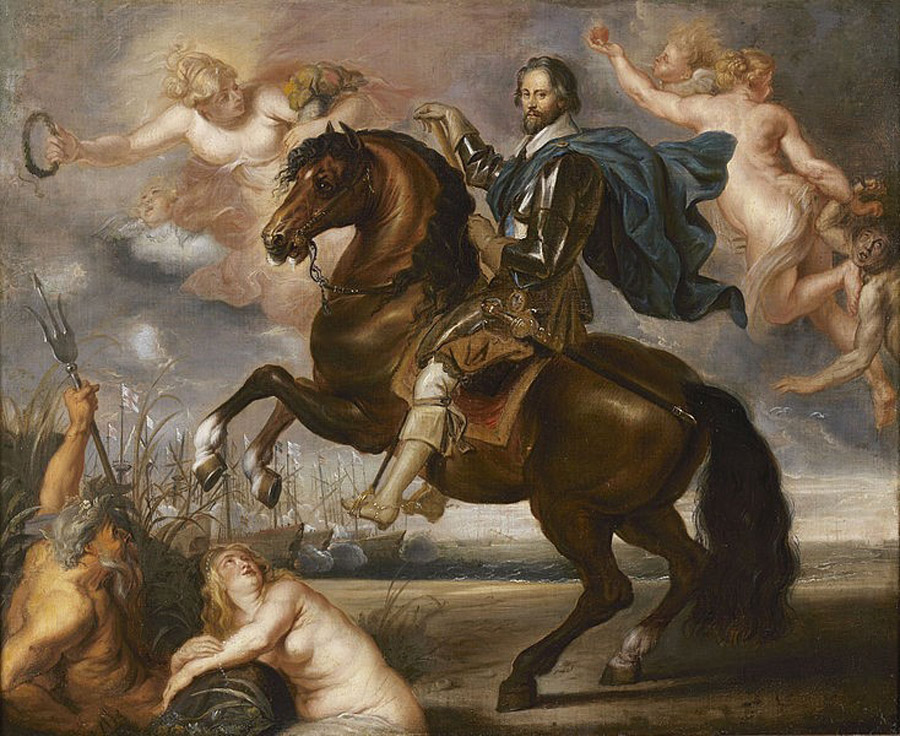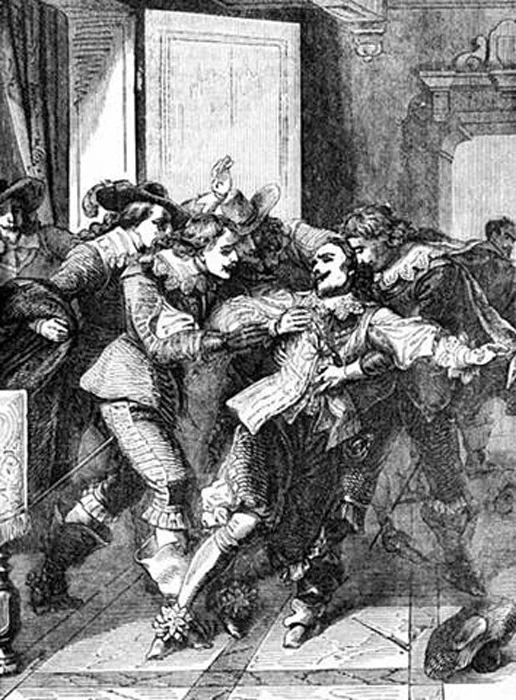George Villiers was many things. Born into a minor noble family, he was elevated through the ranks of the aristocracy by King James I, ultimately being made the 1st Duke of Buckingham in 1623. Brought into the very center of the royal court, he was the favorite of two kings, James I and his son, Charles I.
A conspicuous and well-known figure, he featured in The Three Musketeers by Alexandre Dumas, where he is portrayed as the secret lover of Anne of Austria, wife of the King of France. But it was for another illicit liaison that the real-life Buckingham became infamous.
His rise, if not unprecedented, was certainly meteoric, and many at the English court suspected the favor shown to him by James I was more than that given by a king to a favorite courtier. Many believe that this last and greatest of James I’s favorites was also his secret lover.
From Obscurity to Fame
Villiers was born in Brooksby, Leicestershire, on the 28th of August 1592. He was the son of Sir George Villiers (1550 – 1606), a minor gentleman.
After his father died, his mother Mary ensured that George Villiers received the training befitting a gentleman of the time, learning to dance and fence. He was skilled in speaking French and was an excellent student.
Godfrey Goodman, The Bishop of Gloucester (1624 – 1655), would later describe Villiers as the most handsome man with the greatest physique in all of England. It seems that Villiers’s mother had given him the education to compliment his natural talents, in hopeful preparation for a life at court.
It was August 1614 when Villiers first met King James I, while the king was hunting at Apethorpe in Northamptonshire. The King took a shine to the 21-year-old, appointing him as a royal cup-bearer and bringing him into his inner circle.

With this opportunity, Villiers got the chance to be close to the King. His skill at dancing was noted and he was soon an acting dancer at the masques (royal entertainments) in 1615. Dancing helped him exhibit his body and grace, a most potent way to earn royal favor as courtiers to Elizabeth I had learned.
Under the patronage of the King, Villiers advanced rapidly from one rank to the next. James I was probably homosexual and had previously shown favor to a string of young men at court, and he found Villiers emotionally and physically appealing. With the titles came promotions to high office, and soon he was one of the most powerful men in the kingdom.
A Shower of Rewards
Villiers and the King were certainly very close. James I used to call Villiers “Steenie”, a nickname referring to St. Stephen, who was believed to have had a face of an angel. This close affection came with a series of promotions: Villiers was knighted in 1615, then made a Viscount a year later. Promoted again to the rank of Marquess in 1618, he was finally made Duke of Buckingham in 1623.
This rapid ascent set the court ablaze with gossip, and as early as 1617 King James had sought to clarify the relationship rumors and the situation to his Privy Council. He said that he was in love with Villiers, more than anyone else who was present in the assembly at the moment.
The King spoke on his own behalf and asked the people not to consider this love as a defect. he compared himself with Jesus Christ and said that Jesus did the same, and therefore it is not Christian to blame him. To conclude, he said that “Christ had John, and I have George.”
With the rank came authority and high command. Villiers was appointed as Lord High Admiral in 1619, aged only 26. Taking advantage of the royal patronage and love and affection of King James, he earned a fortune for himself and his family.

All of his relations were married into the great families of England, seeking to ally themselves with the favorite of James I. He himself married Lady Catherine Manners, the only daughter of the immensely wealthy Earl of Rutland.
But was the Duke James I’s last and greatest lover? There is certainly some evidence which survives supporting this. The pair exchanged flowery letters of affection and love to one another, although this was not unusual in the 17th century.
Some historical scholars however believe that such displays of affection, such as Villiers writing that he desired to live in this world only for the King’s sake and promised to live and die as his lover, are not evidence of sexual relationship between the two.
They suggest that the Duke’s position was more similar to that of a surrogate son, as suggested by the King referring to himself as “thy dear dad.” King James was also never accused of sodomy, a serious charge his enemies could have used to undermine his position.
James and Charles: the Fight for Buckingham
The Duke was installed at the center of King James’s court for over 8 years, with the King becoming emotionally dependent upon him. Judging by the surviving evidence, the Duke was also very fond of the King.
But there was always a clear hierarchy between the pair, despite the uniquely informal intimacy the Duke enjoyed. The King always reminded the Duke that he was the one controlling this relationship, and the Duke could never take charge of it.

Further, the King would often boast at court that the Duke of Buckingham was his finest creation. The subtext was clear: the King had made him, and he could break him or unmake him again, anytime he wanted.
The Duke was well aware of the potentially precarious position he was in, referring to himself in letters as “Your majesty’s most humble slave and dog.” Moreover, the Duke’s meteoric rise and favored position had attracted the eye of many rivals, who sought to undermine him by encouraging James I to spend time with other young men at court.
These exchanges of letters and notes always were in good humor, but both recognized the truth of the situation. And this insecurity may have driven the Duke to seek a way out of the situation by winning the trust of Charles, James I’s son and heir.
There is no real evidence about how the Duke and Prince Charles became such good friends, although the Duke had taught the young Prince to dance. But certainly by the year 1623 the King and the Prince were competing with one another for the attentions of the Duke.
A Royal Wedding and a Shift in Loyalty
And 1623 was the year when everything changed. The Duke of Buckingham accompanied Charles to Madrid to seek a marriage between the Prince and the Infanta Maria, sister of Philip IV of Spain. This journey was the moment when Duke of Buckingham, trusted by the Prince to advise him, transferred his loyalty from James to Charles.
The marriage itself to a Catholic princess was, however, hugely unpopular with English Protestants. As a result, the marriage negotiations collapsed and brought humiliation for Duke and Charles.

King James had always attempted to maintain peace, but in the last two years of James’s reign, the Duke of Buckingham and Charles directed most of his foreign policies. So, the Duke and Charles returned back to England with the intention to make war with Spain, a war of retaliation for their humiliation.
King James I died in the year 1625, having kept the Duke as his constant companion and closest advisor to the end. But this had soured the public opinion about him. After the King’s death and while his position in the court of the new King Charles I, the Duke came into contact with another powerful figure at court: the philosopher Francis Bacon.
Bacon had been made the Lord Chancellor, in the year 1618, by the help of Buckingham. To return the favor, Bacon had fulfilled most of Duke’s requests from court for his friends and allies.
But Bacon had his own scandal to worry about. After some investigation by Parliament into Royal Grants, corrupt officials, and financial peculation, Bacon was himself convicted of corruption and forced to retire from his post. Tellingly, neither the Duke nor the King intervened in this conviction.
The Duke and King Charles
The Duke of Buckingham’s favorable position at court continued under the new King from 1625, the only person to manage this. But by now the Duke had made himself unpopular in other circles such as Parliament, not least due to his role in the attempting negotiation of Charles’s marriage to a Catholic princess.

Buckingham was also held accountable for a failed expedition to Germany led by Count Mansfeld, and for conducting a failed attack on the Cadiz in 1625. As a result, the Parliaments of 1625 and 1626 threatened the Duke of Buckingham with impeachment. But the protection of the King was sufficient: Charles I dissolved all of those threats to prevent his favorite from standing trial.
Unpopularity and Fall
In the year 1627, the Duke of Buckingham led another expedition to aid the Protestant Huguenots of La Rochelle. They were threatened by the Catholic armed forces of King Louis XIII of France.
But, the Duke mismanaged the expedition and it led to its failure. Even though the Duke was now deeply unpopular, King Charles continued to offer support to him.
In August 1628 the Duke was in Portsmouth, planning another expedition to La Rochelle. But he would never set sail. While making preparations for the expedition, he was attacked and killed by John Felton, a discontented army official sick of his mismanagement.

And so the duke’s fall was as sudden as his rise had been. With the trust of King Charles and James, the Duke of Buckingham earned great power and immense wealth. But his failure in terms of military and foreign policies had left him deeply unpopular, and it was said that every single person in England danced with joy when he died.
Top Image: George Villiers, Duke of Buckingham. Source: Irina / Public Domain.
By Bipin Dimri